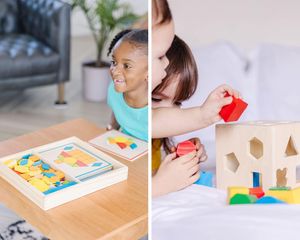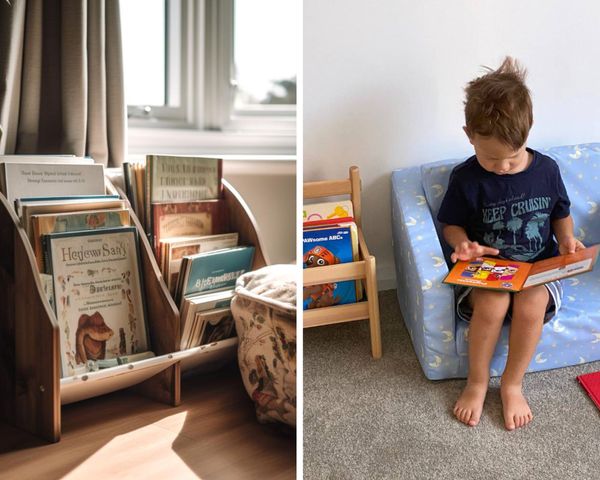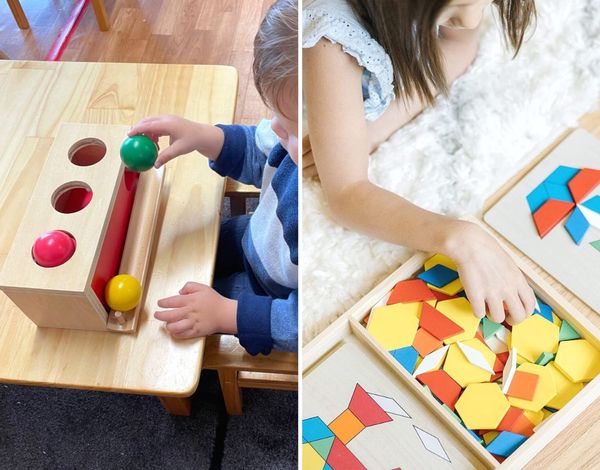What if I told you that a simple piece of furniture, a shelf, could hold the key to an immersive learning experience for your child? It's no ordinary shelf - it's a Montessori shelf, a place of exploration, discovery, and delight.
These shelves aren’t merely eye candy for your living room; they’re catalysts of curiosity and independence, designed to feed your child's natural thirst for learning. With a staggering 60% of a child's cognitive development happening before the age of six, these Montessori shelves are not just a good-to-have, they're an essential component of your child's educational toolkit.
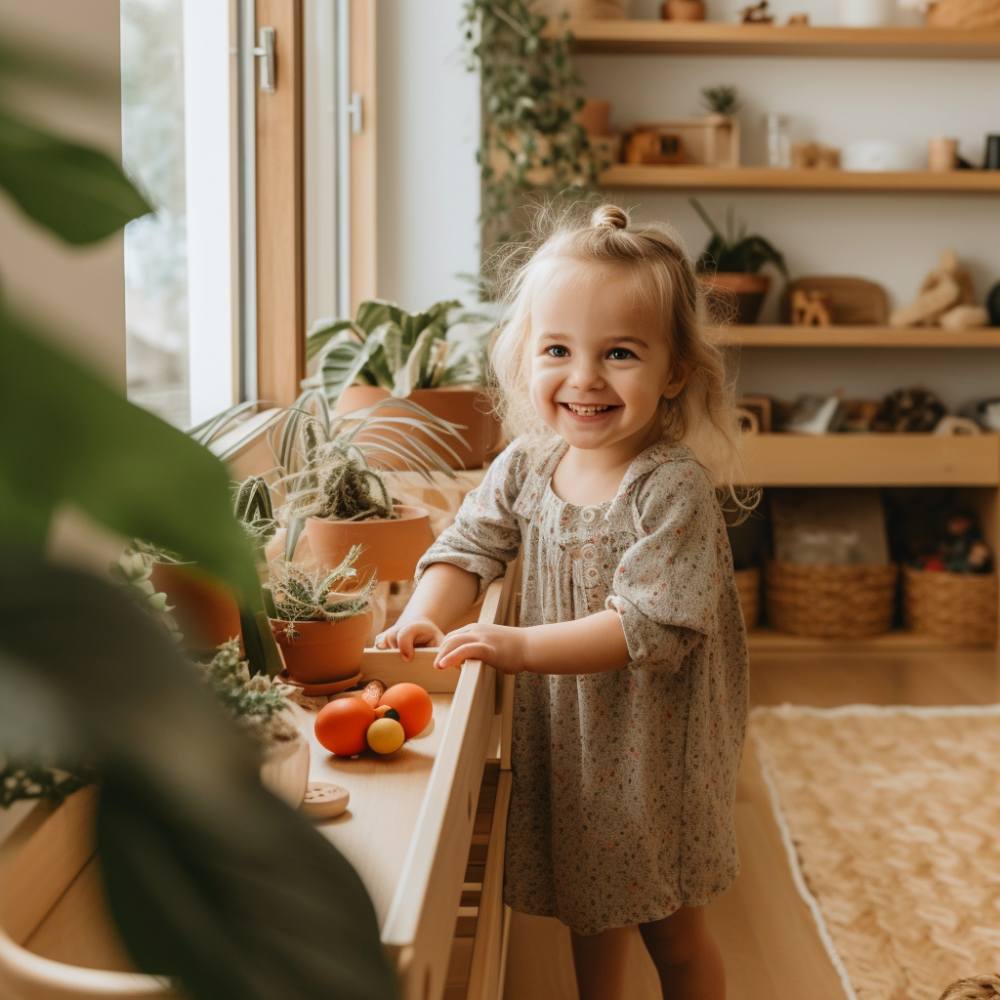
Together, through this article we'll journey through:
- The vital principles underpinning Montessori shelves
- A treasure trove of innovative Montessori shelf ideas, suitable for toddlers to preschoolers
- A step-by-step guide to crafting your own engaging Montessori shelves at home
- Handy tips and tricks to maintaining and troubleshooting common Montessori shelf challenges
One of my most cherished memories is watching Christian, my eldest, engage with his Montessori shelf. At first, it was simply the accessibility of his favorite toys and books that excited him. But with time, I saw his independence grow - he began choosing his own activities and tidying up after himself.
This was the Montessori philosophy at work: fostering self-directed learning within a thoughtfully prepared environment. And trust me, as a Montessori parent, there's nothing more rewarding than seeing your little one express such a sense of autonomy and responsibility!
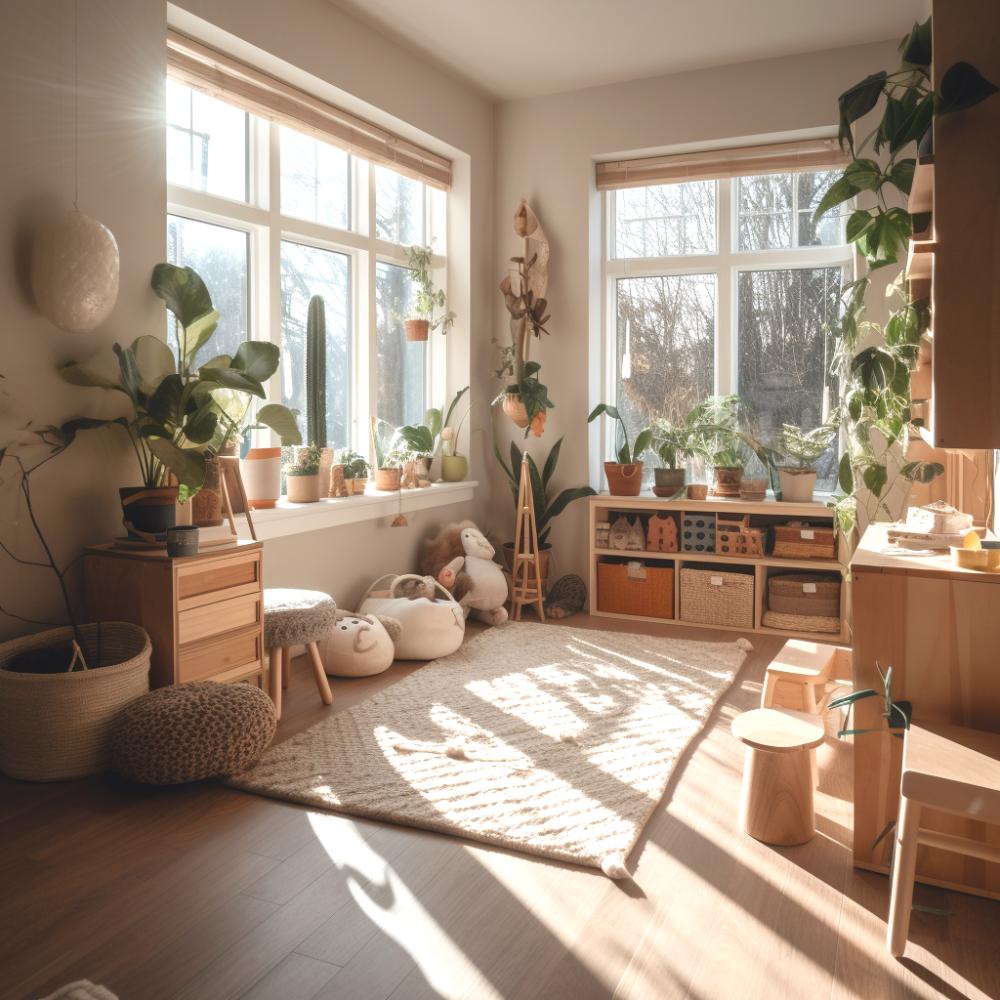
So, are you ready to unlock an educational treasure trove with some inspired Montessori shelf ideas? Come, let's begin this amazing journey together!
The Montessori Shelf: A Brief Primer
A Montessori shelf is more than just a storage space for toys or books. It's a strategic learning tool, carefully curated to foster independence, exploration, and self-directed learning. It's essentially a playroom shelf that mirrors the Montessori philosophy of a prepared environment, enabling your child to choose their activities freely.
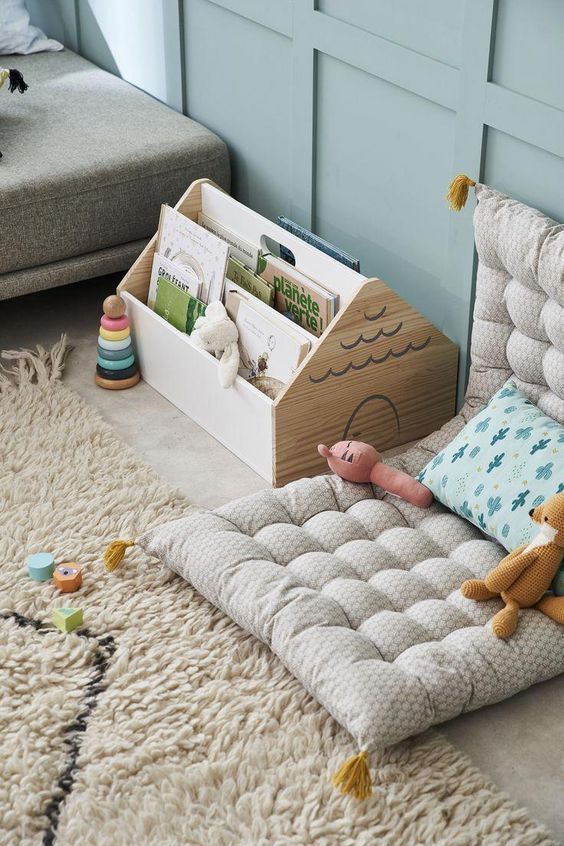
In a Montessori setup, shelves serve a crucial purpose: they make materials accessible to children, encouraging them to engage in learning activities independently. In our home, our Montessori toy shelf acts as a beacon of discovery for my sons, Christian and Andres, brimming with materials that stimulate their curiosity and foster developmental growth.
But it's not only about play; the shelves also help instill the values of responsibility and organization.
Key Principles of a Montessori Shelf
There are three core principles that underpin an ideal Montessori shelf: accessibility, simplicity, and order.
- Accessibility: Montessori shelves must be easily accessible to your child. Lower shelves are perfect for younger children, while higher shelves can house materials for older kids. For instance, one of our Montessori play shelves has lower levels stocked with age-appropriate toys for our 18-month-old, Andres, while the upper levels contain activities for Christian, who is four.
- Simplicity: Clutter is an enemy of concentration. Montessori shelves embrace simplicity, displaying a select few materials at a time to avoid overwhelming children. Remember, less is often more.
- Order: Montessori is all about fostering a sense of order. Every item on the shelf should have a designated spot, promoting tidiness and instilling organizational skills in your child.
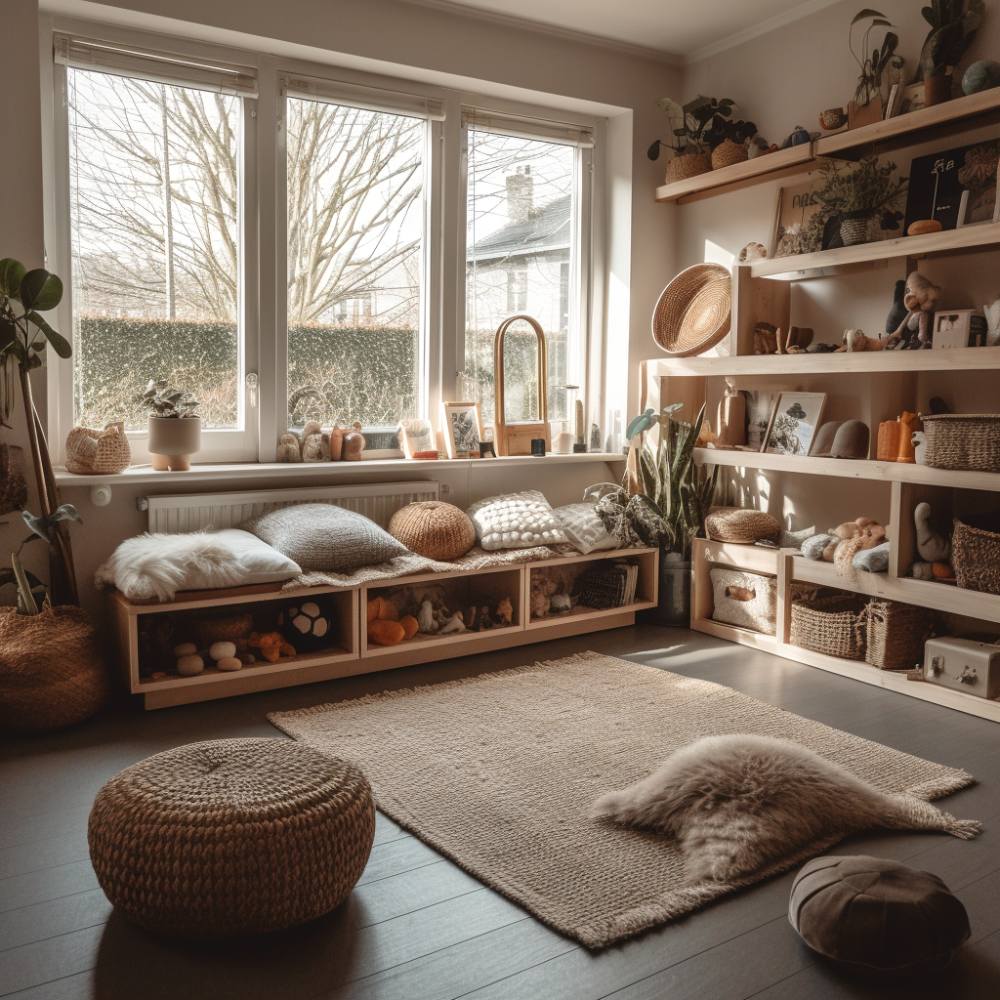
Creating the perfect Montessori bookshelf or toy shelf might seem daunting, but believe me, it's an investment worth making for your child's growth. Stick around as we next explore some Montessori shelf ideas to inspire your setup at home. Spoiler alert: you'll be amazed at the magic you can create with simple shelving for toys!
Unleashing Creativity: Montessori Shelf Ideas
So, now that we've grasped the Montessori shelf's fundamentals, let's dive into the exciting part: setting up a Montessori shelf that suits your child's age, interests, and your home's space. But where do you start?
The beauty of Montessori shelves is their flexibility; they can be tailored to your child's unique needs and interests. Remember, while the shelves might hold the tools, it's the child who brings them to life!
Montessori Shelf Ideas for Toddlers
When setting up a Montessori shelf for toddlers, the emphasis should be on simplicity and sensory experiences. A toy shelf with a mix of tactile materials, like a wooden puzzle, soft dolls, and textured balls, stimulates curiosity and motor skills in toddlers.
One of my favorite Montessori bookshelves for toddlers that we have at home is simple, accessible and sturdy; perfect for little hands. My younger son, Andreas, holds all his favourite books in this shelf (see below). It's a hit because it's sturdy (it needs to be because he often transforms into a Velociraptor at night) and the perfect height for him. It houses a mix of simple books that we read together.
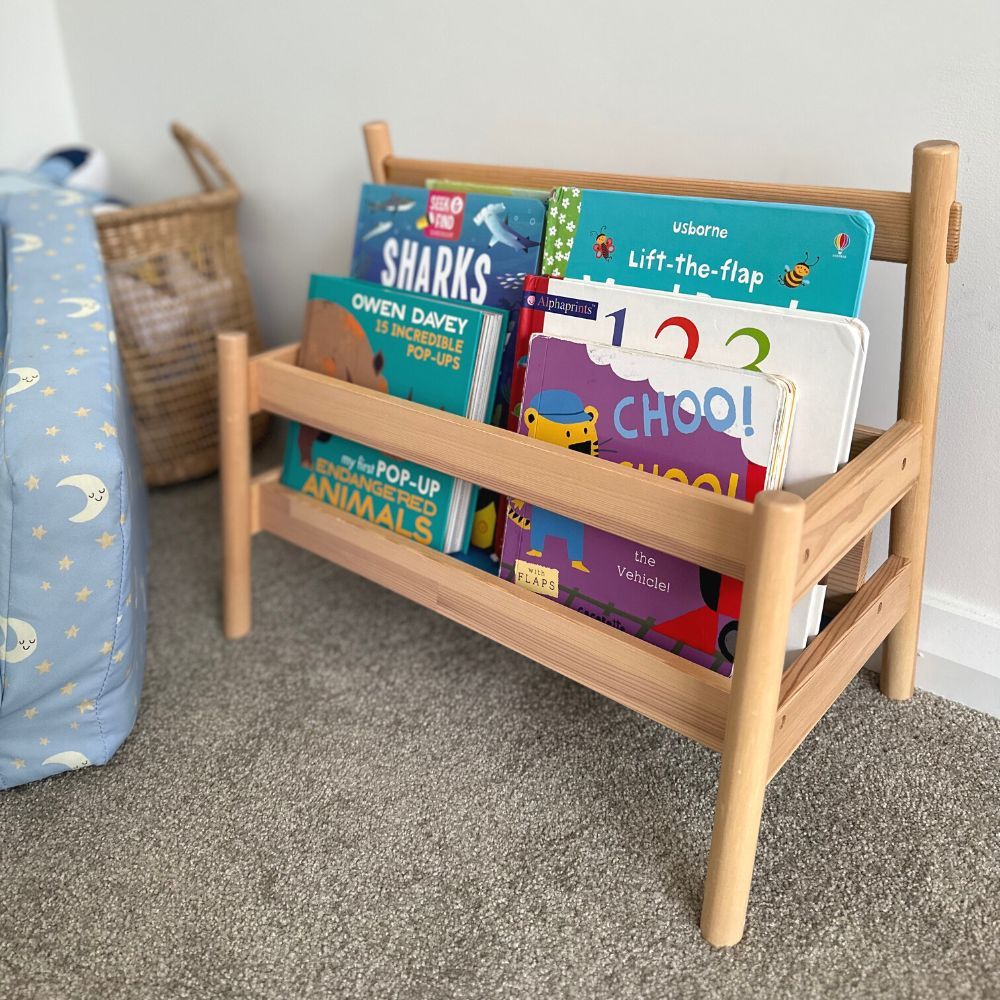
Also, consider a shelf with a basket of musical instruments like a mini xylophone or a hand drum, which helps toddlers explore sounds and rhythm. A 'nature tray' with a few shells, pine cones, or smooth stones can spark a toddler's fascination with the natural world.
Montessori Shelf Ideas for Preschoolers
As your child grows, so does their Montessori shelf. For preschoolers, the shelf should encourage independence and cognitive skills. A Montessori bookcase stocked with age-appropriate books that match their evolving interests can be a haven of knowledge for a curious preschooler.
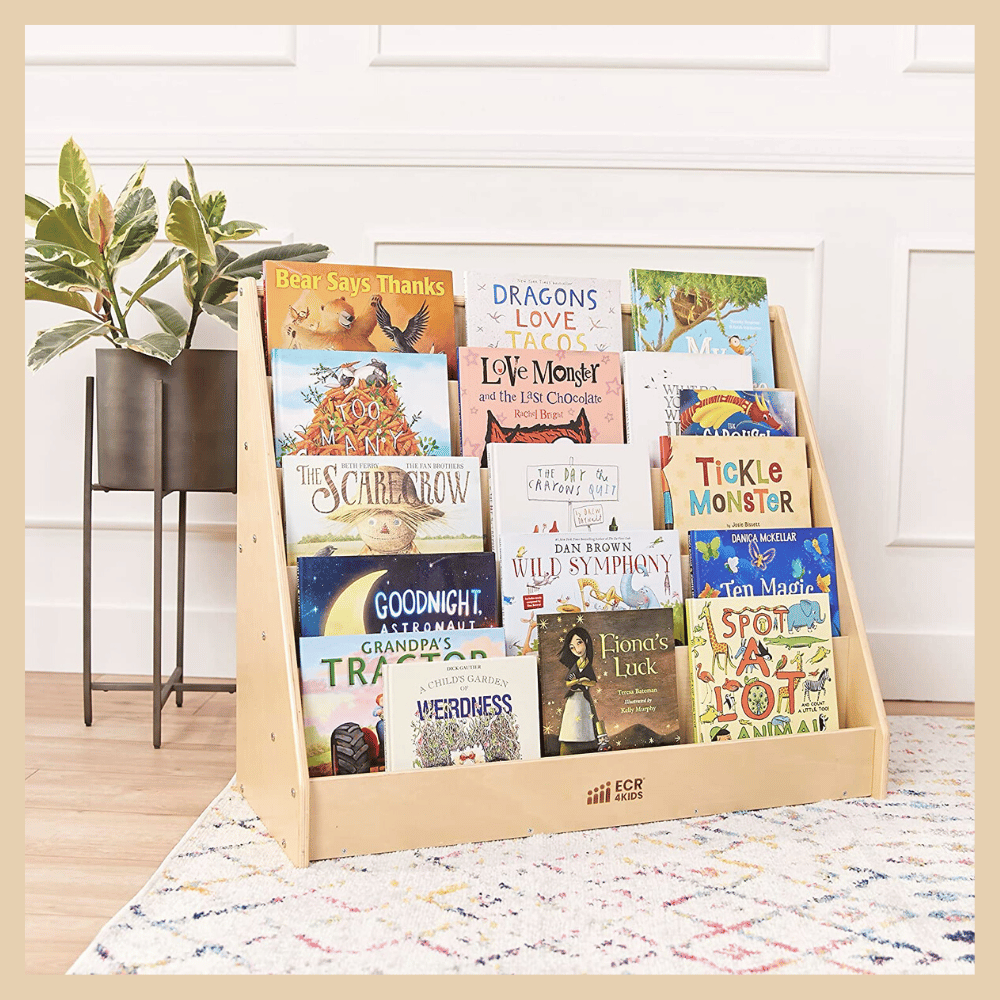
I've found that a book and toy shelf combination works wonders with Christian. With a mix of challenging puzzles, letter tracing boards, and math beads, he has a wealth of activities at his fingertips.
And yes, superheroes do find a place on our Montessori shelf, because fostering imagination is just as important!
Lastly, don't underestimate the power of an 'art shelf.' With easy access to colored pencils, safe scissors, and stacks of paper, it might just give birth to a tiny Picasso!
Regardless of how you set up your Montessori shelf, remember that it should reflect your child's individuality and promote their growth. Be it a bookshelf alternative, a play shelf, or elaborate shelving for the playroom, each holds the potential to be a gateway to learning and joy.
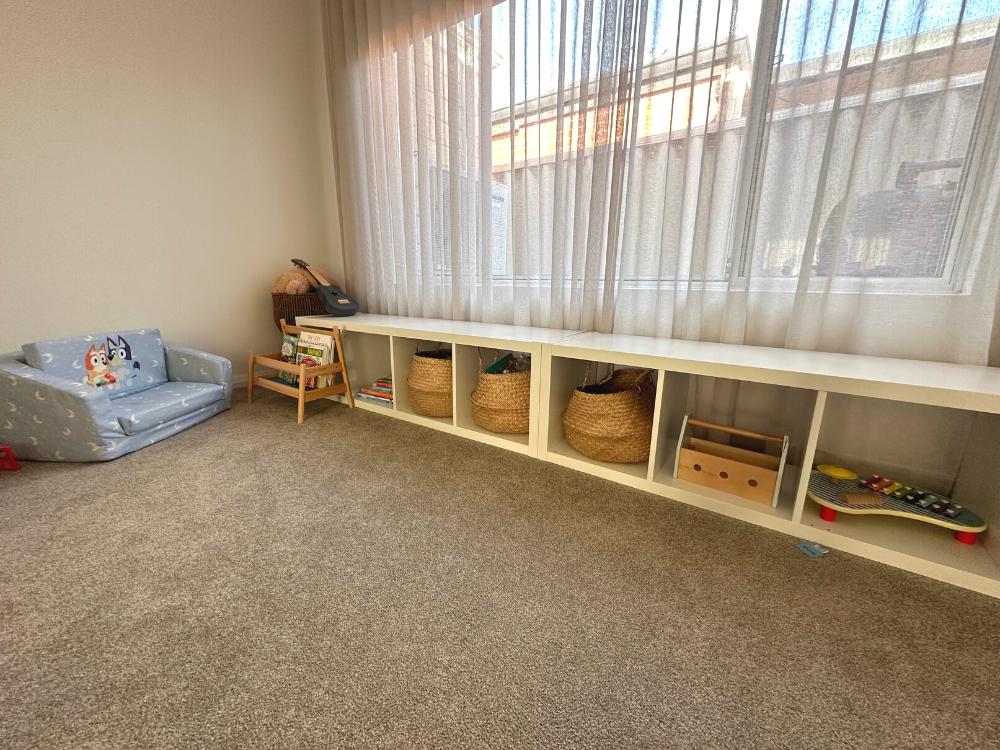
Ready to explore more about how to set up these Montessori shelf ideas?
Let's plunge right in!
Do It Yourself: Crafting Your Own Montessori Shelves
Have you ever stood in the middle of a toy store, feeling overwhelmed by the prices of seemingly simple wooden shelves? Well, I've been there, and I can tell you, it feels like a gauntlet!
But what if I told you that you can create your own fantastic Montessori shelves at home? Yes, a little bit of elbow grease, creativity, and love can turn simple materials into a learning wonderland for your child.
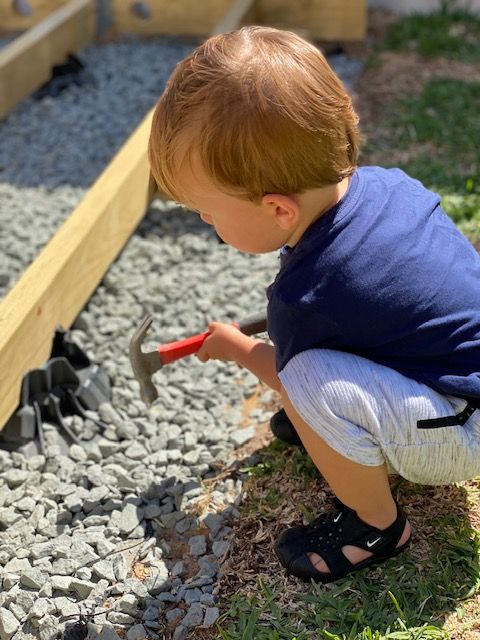
My journey into DIY Montessori shelves was born out of necessity, a dash of creativity, and a passion for woodworking. My first attempt at a DIY Montessori bookshelf resembled a wonky piece of abstract art more than a shelf, but as with all things parenting, it's a process!
Now, a few projects later, I have discovered that creating my own Montessori shelves has not only been cost-effective but also a heartwarming and rewarding endeavour.
The Blueprint to Your DIY Shelf
Here's how you can kickstart your own DIY project:
- Space Evaluation: Determine the space you have available. This is key to ensuring the shelf fits comfortably in your child's play area.
- Child Accessibility: Consider your child's height and reach. The essence of Montessori shelves - be it a bookshelf, a play shelf, or even a toy shelf - is accessibility. Your child should be able to reach all the materials without assistance, promoting independence.
- Material Selection: You don't need to be a woodworking expert to create a Montessori shelf. Simple, sturdy materials like pine boards can work wonders. And remember, perfection is not the goal here; a few uneven edges or a visible screw won't take away from the joy of your child using a shelf you made just for them.
- Safety First: Ensure the shelf is stable and secured to the wall to prevent any tipping accidents. Rounded corners and child-safe paint are also a good idea.
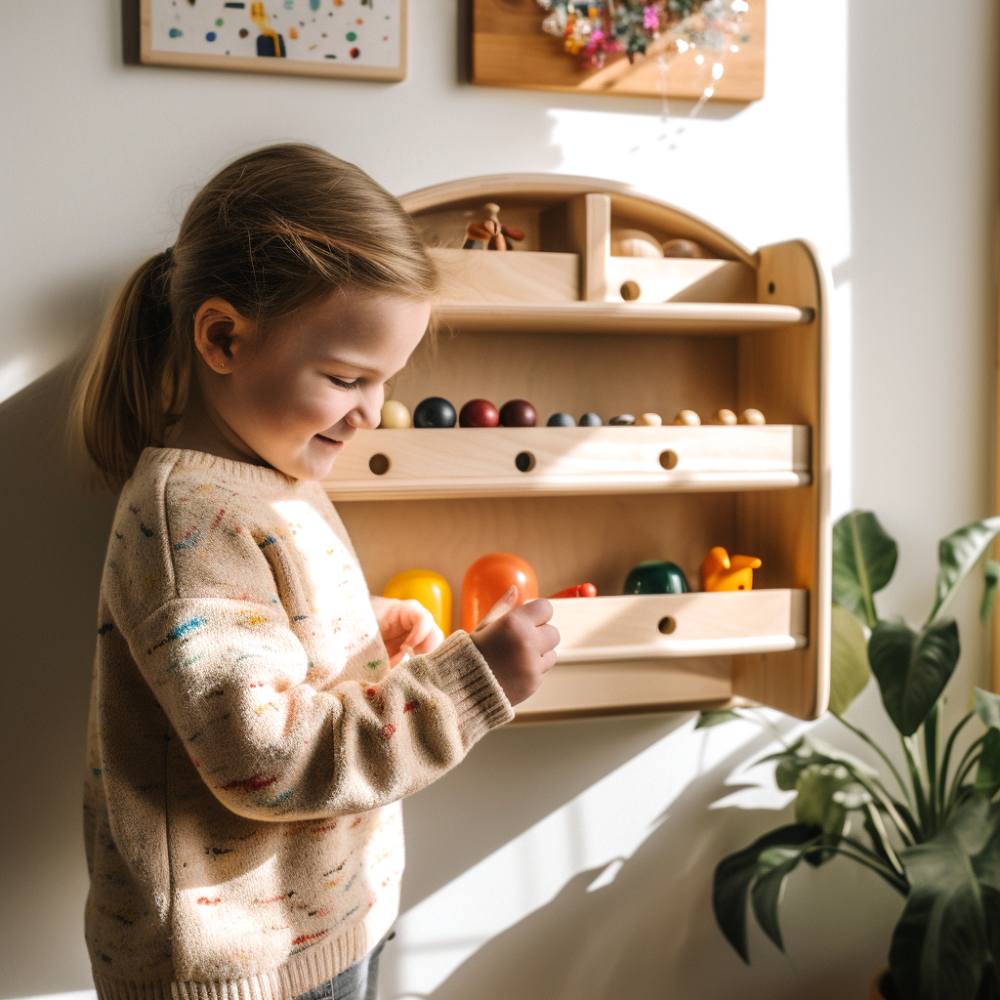
The Path Ahead
The world of DIY Montessori shelves can be as vast and varied as your imagination allows. It's a journey that's sure to be as rewarding for you as it is for your little one. After all, nothing compares to seeing your child thrive in an environment you've lovingly created.
As a passionate DIY-er, I'm excited to share that I'll be rolling out a dedicated DIY section on my blog soon! Here, you'll find step-by-step guides on creating simple and affordable Montessori materials at home. So, stay tuned for that!
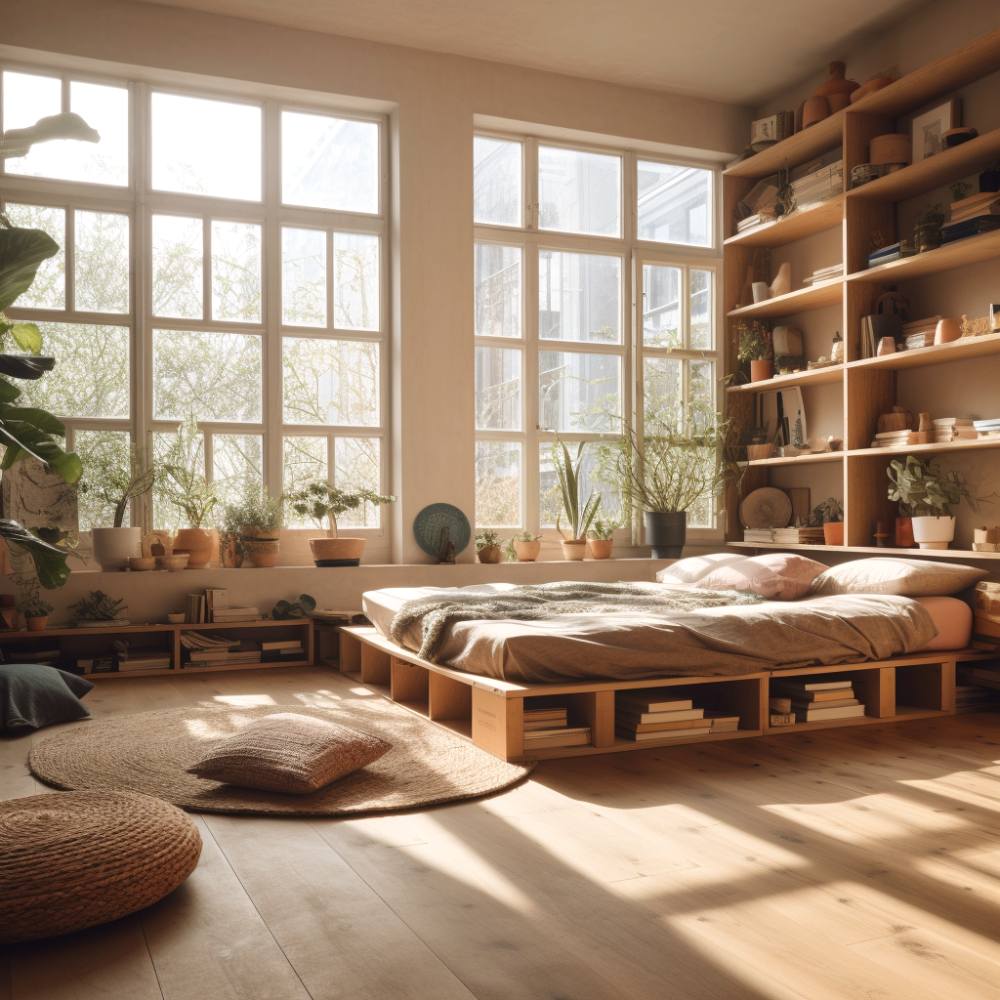
Montessori Shelf Maintenance: Tips and Tricks
Ah, the charm of a well-organized Montessori shelf! Isn't it just a sight to behold - the neat arrangement of toys, books, and activities? It's as appealing to the eye as a steaming cup of coffee on a sleepy Monday morning.
But let me tell you a secret - maintaining a Montessori shelf is a bit like nurturing a garden, or for us parents, attempting to keep a houseplant alive amidst the whirlwind of parenting!
Rotation: Keep it Fresh and Engaging
The real magic of a Montessori shelf lies in its ability to keep our little ones curious and engaged. It’s like a mini soap opera, where the characters (toys) make grand re-entries after a hiatus. This is where the concept of toy rotation comes into play.
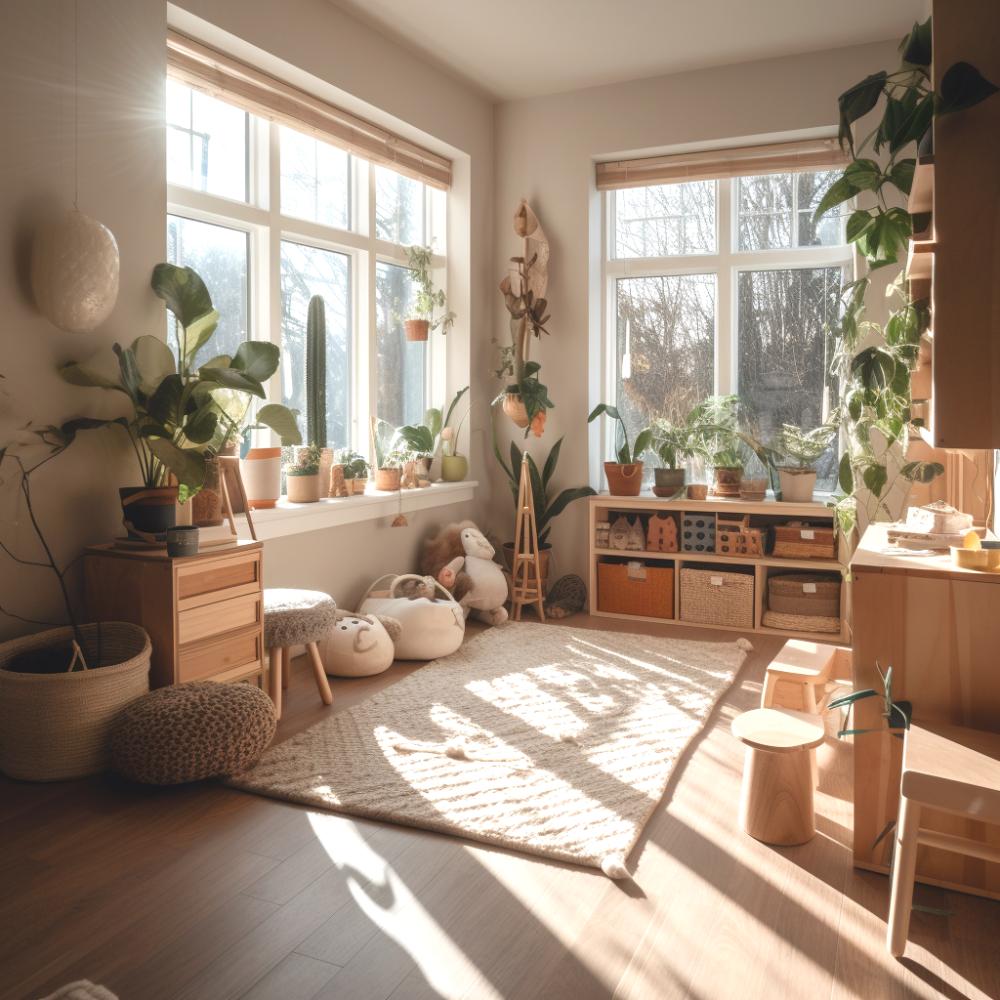
You don't need a whole new set of toys or books every week, trust me - it's not as daunting as your child's ever-growing laundry pile! Even a slight change can stir interest and reignite the joy of discovery.
For instance, reintroducing a toy after a few weeks might make it seem as exciting as a brand new toy. And yes, the same trick doesn't work with vegetables, I've tried.
Decluttering: Less is More
In the world of Montessori shelves, less is indeed more. An overcrowded shelf can overwhelm a child, much like how we feel when faced with a double-booked calendar. It’s important to declutter the shelves regularly, ensuring the materials are not only age-appropriate but also aligned with the child's evolving interests.
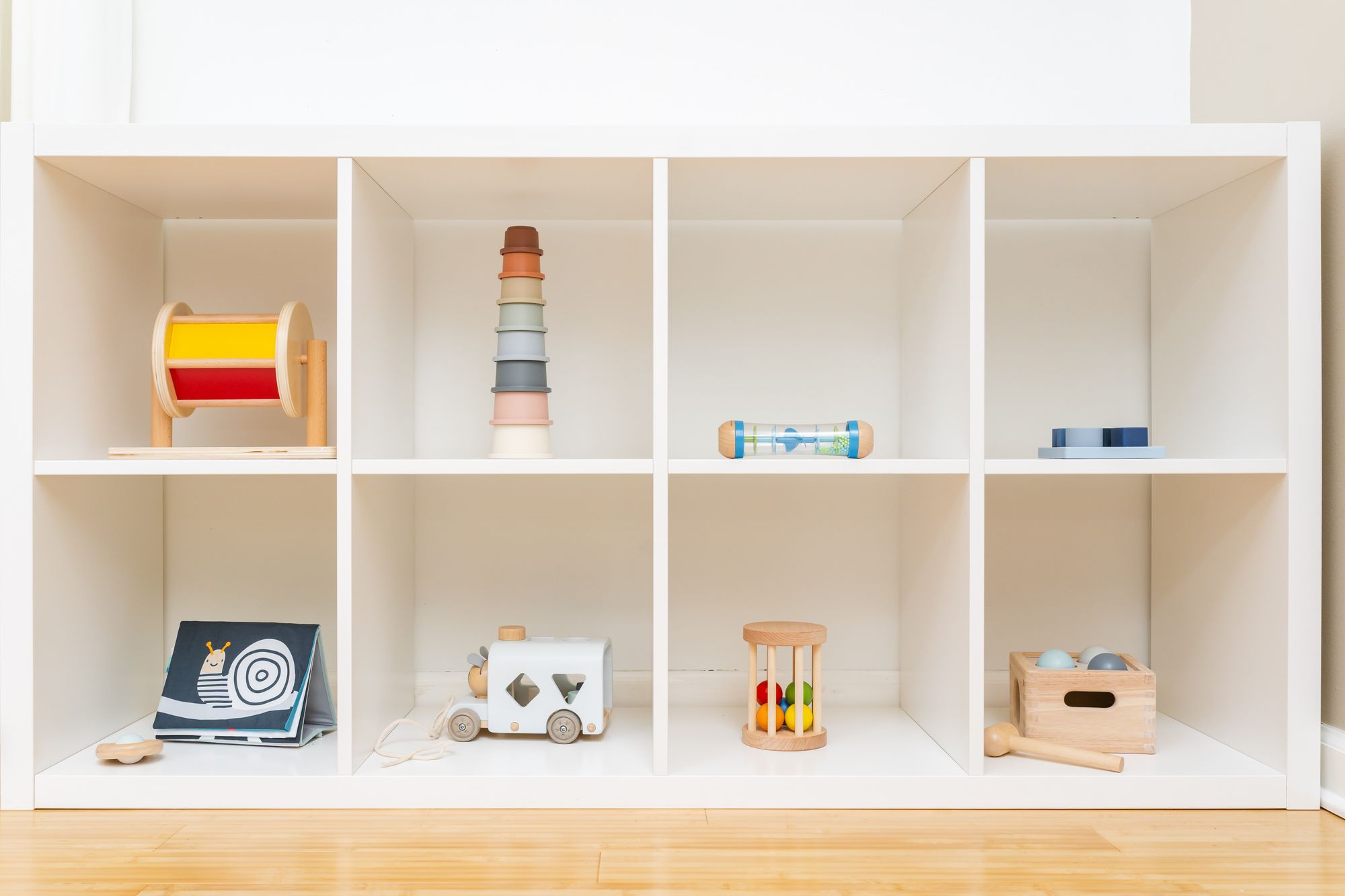
The Dynamic Duo: Change and Consistency
Just like how our dinner menus need to keep up with our kids' fluctuating food preferences (goodbye broccoli, hello mac 'n' cheese), a Montessori shelf should reflect the child's changing abilities and interests.
At the same time, a dash of consistency is crucial. Familiar objects provide a sense of comfort, like that well-worn pair of slippers after a long day.
Well, there you have it! Implementing these strategies has transformed our Montessori shelf into an exciting, ever-evolving hub of learning and exploration. It's like a parenting magic trick - now you see clutter, now you don't!
I hope these tips inspire and assist you in your Montessori journey as much as they have in mine.
Troubleshooting Common Montessori Shelf Challenges
Setting up and maintaining a Montessori shelf, as we've journeyed through together in this article, isn't always a walk in the park. In fact, it often resembles a roller-coaster ride filled with ups, downs, and unexpected twists. Think of a blockbuster adventure movie, but with fewer special effects and more toys scattered around.
But fret not, I'm here to share some practical solutions to common Montessori shelf challenges, which I've gathered from my personal encounters on this wild ride.
1. Shelf Overcrowding: The Avalanche Problem
If you're anything like me, you've probably experienced the avalanche problem - that moment when your Montessori shelf resembles a city skyline, with toy towers threatening to topple any second. But remember our mantra: less is more. Declutter regularly and keep it simple.
The goal isn't to create a miniature version of a toy store, but to present a thoughtful, inviting selection that stimulates exploration and learning. Trust me, your kid's attention (and your sanity) will thank you.
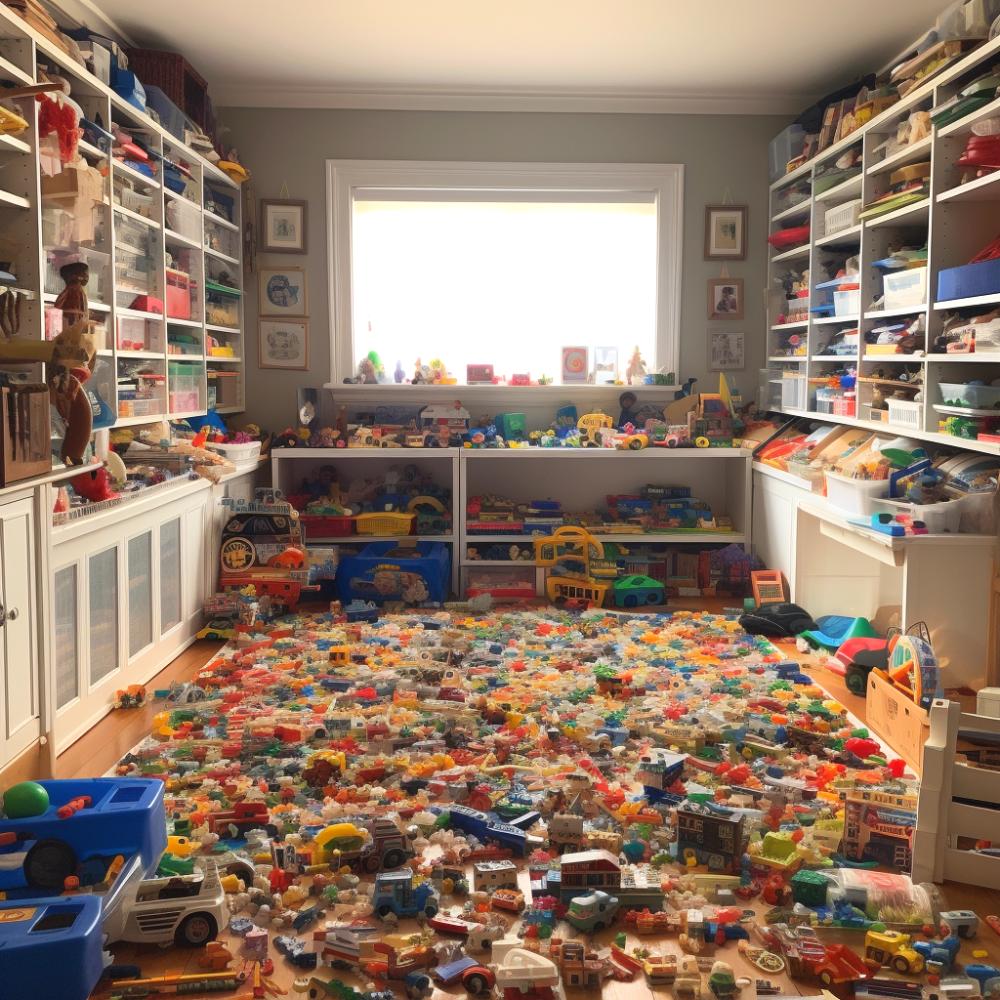
2. Losing Interest: The Montessori Shelf Blues
So, you've put together a beautiful Montessori shelf, but your little explorer seems more interested in the cardboard box it came in. What gives? Here's where the art of rotation works its magic.
Regularly refreshing materials keeps the shelf engaging, kind of like how a season finale leaves us eagerly awaiting the next season. You can find more details on toy rotation in my article here.
If you do need a refresh of materials, you can get some ideas in my review articles below:
- Unleash Your Child's Genius with Montessori Puzzle Maps
- Best Montessori Toys for 3 Year Olds That Parents Love!
- Best Montessori Toys for 2 Year Olds: 7 Top Parent Picks!
- 6 Viral Montessori Wooden Toys Your Child Will Love!
3. Material Misplacement: The Case of the Vanishing Toy
Then there's the mystery of the missing pieces. You know, that one puzzle piece that always seems to vanish into thin air? This is where order and organization come into play. Encourage your child to return items to their designated spots.
And for those sneaky toys that still manage to go walkabouts, a regular 'toy hunt' can turn cleanup into a fun game!
4. Shelf Sturdiness: The Leaning Tower of Pisa
Remember my DIY shelf project? I had a bit of a leaning tower of Pisa situation at first. It wasn't the most stable of structures, but it was a lesson learned. Ensure that your shelf is sturdy and safe. After all, we want our little ones' learning journey to be smooth and free from unintended tumbles!
As with any aspect of parenting, the key lies in embracing the challenges and growing through them. Each obstacle overcome becomes a triumph that sweetens our Montessori journey.
So take heart and know that you're not alone in navigating this exciting voyage.
Behind every successful Montessori shelf lies a series of trials, errors, and a ton of laughter and love!
Our Final Thoughts
Montessori parenting, with its enchanting moments and occasional speed bumps, is truly a ride worth taking. As we've journeyed together through this guide on Montessori shelves, we've seen the incredible potential they hold.
From nurturing curiosity and independence to offering a space for exploration, these humble shelves are like silent teachers in our homes. They foster learning, kindle imagination, and inspire play, embodying the spirit of Montessori in every carefully selected item they hold.
Yet, the essence of Montessori, and indeed parenting, isn't in achieving perfection, but in celebrating growth, respecting individuality, and embracing the beautiful mess that comes with it.

Our goal isn't to create a Pinterest-worthy shelf, but a warm, inviting space that resonates with our little ones. So if your child's favorite toy is a cooking pot instead of a beautifully crafted wooden puzzle, that's perfectly okay.
In the end, it's about nurturing joy, curiosity, and a love for learning.
As we continue on this journey in discovering our and our children's true north, let's remember to pack loads of love, a sprinkle of patience, and an open mind ready to learn from our tiny humans.
After all, they are our best teachers. Let's keep growing, keep laughing, and keep loving - for this wild, wonderful ride of Montessori parenting is our shared adventure.
As we sign off, remember, every item on your shelf, every smile, every "Aha!" moment, is a testament to your love and dedication. You are doing amazing things, and I'm here, cheering you on, every step of the way. Here's to us, the brave explorers of the Montessori world!

References and Further Reading
To continue your journey into the enchanting world of Montessori, I invite you to explore a selection of our comprehensive guides and insightful reviews that delve deeper into various aspects of the Montessori philosophy:
Informational Articles
- Montessori Philosophy: An Overview
- How to Implement Montessori at Home
- Montessori Parenting: A Guide to Raising Happy, Independent Children
- Montessori Homeschooling: Getting Started and Beyond
Product Reviews
- The Best Montessori Bookshelf: My Reviews and Recommendations
- Best Montessori Books: A Review of My Favorites



